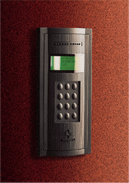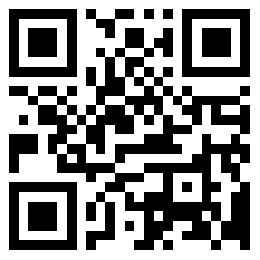Installation and maintenance of video monitoring system
Video monitoring system has been widely used in roads, public security, forest fire prevention, buildings, factories, shopping malls and other industries. China's security monitoring system for safe cities has been fully implemented in all provinces and cities across the country, and has achieved remarkable results. In the huge monitoring system, the fast ball video camera Equipment, can be said to be countless; The image of the front-end camera in the large-scale monitoring system must be transmitted through optical fiber to realize the transmission of the monitoring image of a large area to the monitoring center. The monitoring system of other industries also uses a large number of cameras, video optical transceiver transmission, etc.
Installation and maintenance of video monitoring system
In the video monitoring system, because each monitoring point is located in a different location, it requires a lot of manpower and time to install the front-end camera (fast ball), transmission equipment, and transmission line auxiliary equipment. How to quickly detect and maintain the equipment and transmission line, and save maintenance costs is a headache for engineers. For the maintenance of the monitoring system, the monitoring equipment and transmission lines are usually overhauled. Monitoring center equipment of video monitoring system, such as matrix and video The server , TV wall, etc., are installed in the monitoring center machine room, and the equipment is concentrated in a good indoor environment for operation, so the probability of failure of the monitoring center equipment is small; While the front end camera and fastball are installed outdoors, and the video optical transceiver is installed in the outdoor distribution box. The equipment has to work in harsh environments such as wind and rain, high temperature in summer and low temperature in winter, so the probability of failure is high. For the maintenance of front-end monitoring equipment, it is necessary to be able to test the optical power of camera image, fast ball image, PTZ control, video optical transceiver, and use a multimeter to test the power supply system, so as to comprehensively solve the possible failure of front-end equipment.
1. Camera maintenance
When the monitoring center cannot receive images, the engineering personnel should first check whether the camera ball or ball machine is normal. When detecting the camera equipment, the engineering personnel use the video monitoring integrated test instrument to do three aspects of detection work: first, use the instrument to test whether the camera has images. The 3.5 inch color display screen of the instrument can clearly display the images collected by the camera. If the instrument fails to receive images or the received images are abnormal, the camera is faulty; Second, use the video signal attenuation measurement of the monitoring integrated tester to measure the video complex sum level of the camera. The normal range is 800-1000mV. If the level is too low, the image will be darkened, and if the level is too high, the image will be blurred; Third, use the multimeter of the instrument to measure whether the transformer power supply of the camera is normal. Generally, the transformer output is DC 12V, and the transformer output of the ball machine is AC 24V. The transformer is a high failure rate accessory in the monitoring system.
2. PTZ control and maintenance
Security monitoring In the system, the PTZ or ball camera is widely used. The staff of the monitoring center can adjust the camera angle flexibly. When the PTZ or ball camera is out of control or cannot rotate at a certain position, the engineering personnel need to carry a multi-function keyboard to test whether the PTZ or ball camera rotates normally. However, different manufacturers of PTZ or ball machine have their own special agreements. When maintaining the ball machine, engineers need to bring corresponding multi-function keyboards for testing, and may need to bring multiple keyboards for testing different ball machines. The engineers use the integrated video monitoring tester to solve this problem, because it has embedded more than 30 protocols such as Pelco D/P and BOSCH, and the PTZ continuous rotation test function dedicated to testing the PTZ rotation. The engineers can operate the PTZ to keep rotating through the instrument to observe whether there is a jamming phenomenon when the PTZ rotates.
3. Video optical terminal maintenance
Video optical transceiver is divided into transmitter equipment and receiver equipment. The transmitter equipment and camera are located outdoors. Engineering personnel usually carry out maintenance tests on the transmitter equipment. The maintenance of the optical transceiver is tested in three steps. First, use the multimeter of the video monitoring integrated tester to measure whether the power supply of the optical transceiver is normal. Generally, the power input is DC 5V; Second, measure whether the optical fiber output power of the optical transceiver is normal. The transmitting wavelength of the transmitting terminal is 1310n, the receiving wavelength is 1510n, and the general transmitting power of the 20KM optical transceiver is about - 9dBm; Third, test whether the video port of the optical transceiver and RS485/RS232 communication are normal. The monitoring integrated tester sends the standard color bar image signal to the video optical transceiver, and the monitoring center receives the test color bar sent by the video optical transceiver, indicating that the video transmission part is normal; Use the RS485/RS232 data capture function of the instrument to receive the control signal of the optical transceiver. If the control code sent by the monitoring center is received, it indicates that the RS485/RS232 communication transmission of the optical transceiver is normal.
4. BNC coaxial cable transmission maintenance
In the current video monitoring system, the traditional analog image is dominant, and IP digital camera will be popularized temporarily in the future due to compatibility and other problems. In general, monitoring systems in small areas, such as factories and buildings, directly use BNC coaxial cables to transmit images. BNC coaxial cables are generally used because of their weak anti-interference ability and each BNC cable can only transmit one channel of video. However, because the monitoring area is small and the transmission cost of coaxial cables is relatively low, BNC coaxial cables are widely used. Due to aging, man-made damage and other reasons, BNC cable causes video image quality degradation or even interruption. In maintenance work, it is usually necessary to detect whether BNC cable has problems.
When engineers maintain cables, they use a comprehensive tester to do three steps. First, connect the BNC cable to the instrument at the camera end, and use the image generator of the instrument to send standard color strips. Under normal circumstances, the monitor in the monitoring center should receive the same color strips. This step determines whether the BNC cable is disconnected, Whether the color of the image received by the monitoring center is normal; Secondly, in the monitoring center, the video signal attenuation measurement function of the instrument is used to measure whether the video complex sum level is too attenuated after transmission through BNC cable. Generally, it is 800-1000mV, and excessive attenuation will cause image jitter, image darkening and other phenomena. Third, if the BNC cable is disconnected in the middle, because the BNC cable is buried in the trunking, it is very difficult for engineers to find the fault point without test tools. Using the line function of the integrated test instrument, the instrument transmits signals and measures the approximate location of the breakpoint, so that engineers can find the location of the breakpoint immediately, greatly improving work efficiency.
5. Optical fiber transmission maintenance
Optical fiber transmission has the characteristics of large capacity, high speed and high stability. Video surveillance systems increasingly use optical fiber devices such as video optical terminals and optical transceivers to transmit video images and control signals. Large scale monitoring systems such as expressway monitoring and safe city monitoring use optical fiber transmission to achieve high and stable video transmission. With the development of optical fiber communication technology, the price of video optical terminals and optical fiber cables is getting lower and lower. Optical fiber transmission has become very popular for video monitoring systems. Optical fiber transmission is usually used for signal transmission between several hundred meters and one hundred kilometers, and detection of optical fiber cables is also an essential link. For the maintenance of optical fiber, engineers must use professional optical fiber test instruments, such as light source, optical power meter, OTDR, etc. The stable light source is specially used to emit laser light with high stable power value. The laser light has a certain attenuation after transmission through the fiber. The power value after transmission through the fiber is measured by the optical power meter, and the fiber loss value is calculated in dB. The time consumption for measuring the optical fiber must be matched with the light source and the optical power meter to prepare for calculating the optical fiber loss; OTDR is an instrument used to measure the breakpoint position of optical fiber. It detects how many kilometers the optical fiber is disconnected, but the cost of OTDR is too high. Smaller scale engineering companies can use optical fiber fault finder to measure the breakpoint position. For small-scale engineers, the most needed optical fiber measurement tool is the optical power meter, because long-distance optical cables are usually maintained by telecom operators or radio and television systems. Small scale engineers only need to measure the power of optical fiber equipment and optical fiber loss to find out the problem.
When maintaining optical fibers, engineers use the optical power measurement function of the monitoring integrated tester to switch to the corresponding wavelength to measure multimode and single-mode optical fibers. Optical communication equipment connected to optical fibers (such as video optical transceiver, optical transceiver) will normally transmit optical signals. If the instrument cannot receive optical signals, it will display - 70dBm, indicating that the optical fibers are not connected, It is necessary to check whether the fiber jumper and optical cable are disconnected or damaged.

![]()






